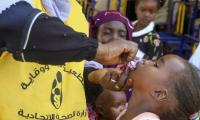John Connally, who ran the US Treasury under President Richard Nixon five decades ago, once opined to his international counterparts that “the dollar is our currency, but it’s your problem.” The US dollar is estimated to be used in 88 per cent of all international transactions, and almost half of the world’s trade. Approximately 60 per cent of global foreign-exchange reserves are kept in dollars. The strength of the dollar was used by the West to control the economy and penalize human rights violations through economic sanctions, for example, in Iran and Venezuela. President Trump excessively used economic sanctions against Chinese (and many European firms) in implementing his ‘America First’ credo. However, the Russian embargo after the Ukraine crisis took the sanctions to a new level.
In an effort to reduce their dependence on the US dollar, countries facing sanctions — like Russia, Iran, and Afghanistan, as well as economic rivals of the US such as China, and even countries not in direct conflict with the US like India, Brazil, South Africa, and Saudi Arabia — are actively seeking ways to decrease their reliance on the dollar; a trend known as ‘de-dollarization’. Joining this list are countries that are currently grappling with economic crises, burdened by unsustainable debt, or experiencing foreign exchange reserve shortages, like Pakistan. Pakistan’s recently announced mechanism to allow barter trade with Iran, Afghanistan, and Russia means that (eligible) Pakistani entities can exchange goods with these countries without using the dollar or other currencies. The mechanism — called the Business-to-Business (B2B) Barter Trade Mechanism — covers a range of specific goods, including petroleum, gas, fertilizer, and wheat.
Pakistan is also planning to finalize a similar mechanism with China. How effective will this mechanism be in helping Pakistan’s dollar-starved economy? To answer this, we need to look at some of the global developments that have shaped the new era of de-dollarization. In response to Western sanctions, Russia’s finance ministry has explored various avenues to eliminate the use of dollars and euros in foreign trade. They have proposed ideas such as exchanging goods of equal value or engaging in offset deals, where a foreign partner exports goods on behalf of a Russian company and then provides goods of the same value to that company. Russia has also agreed to conduct barter trade with Iran, another country under US sanctions for decades. The deal involves supplying zinc, lead, and aluminium from Russia to Iran and car parts and gas turbines from Iran to Russia.
In June 2022, the Chinese and Russian presidents expressed their intention to expand the use of their own currencies for settling bilateral trade. Around the same time, during a summit, leaders from Iran, Malaysia, Turkey, and Qatar proposed the utilization of cryptocurrencies, national currencies, gold, and barter for trade. Russia and Iran have also increased their trade through more direct routes by land and sea. For example, container shipping across the Caspian Sea rose by 120 per cent in 2022 compared to 2021.
Russia is now Iran’s fifth-largest trading partner and its biggest investor. Iran is also becoming a logistic bridge for Russian trade (through sea, rail, and road) with the Middle East, South, and Southeast Asia. It has had a unique experience in surviving amid sanctions for many years. Afghanistan is another country that has turned to barter trade with China, Russia, and Iran. The Taliban government in Afghanistan is isolated from the global banking system and needs alternative sources of income and supplies. After signing a 25-year ‘strategic partnership’ with Afghanistan in 2021, China has become its second-largest trade partner after Pakistan. In October 2022, Afghanistan also signed a standing arrangement with Russia to get fuel and wheat in exchange for rubles or goods. Iran is now the biggest source of fuel for Afghanistan. Coming back to Pakistan: the country’s trade with Afghanistan has increased significantly, especially the import of Afghan coal. The two countries mostly use cash for trade but also barter some goods. Pakistan and Iran have opened the first of six border markets to boost their trade cooperation. This could help reduce goods smuggling, especially diesel, from Iran. The Pakistan Petroleum Dealers Association said last month that up to 35 per cent of the diesel sold in Pakistan was smuggled from Iran.
Pakistan has also signed an agreement with Russia to buy cheap oil at discounted prices (under Western sanctions). Pakistan will buy 750,000 barrels of Urals crude in batches, as its oil terminals can only handle 370,000 barrels at a time. The first batch will arrive at Port Qasim in the next few weeks. If the deal goes well, Pakistan plans to import 100,000 barrels per day from Russia. This is a significant amount, as Pakistan imported 154,000 barrels per day of crude oil last year.
This shows that Pakistan and its neighbours are trying to reduce their dependence on the US dollar due to their respective reasons. The three countries with which Pakistan has agreed to a B2B barter trade mechanism are finding formal banking systems impractical. Hence a barter trade with Pakistan is a win for them. Pakistan can benefit from this process by accessing cheaper energy from Russia and Iran, and coal from Afghanistan, without using dollars. This can help ease the pressure on its foreign exchange reserves.
This is a big win for us. However, some may argue that Pakistan’s trade volume with these three countries is too small (less than $5 billion per annum) compared to its Western trade partners. They may also question whether Pakistan has enough goods to offer in return for cheap energy imports; in total, 2.58 per cent of our total imports and 3.6 per cent of our total exports will benefit from barter trade. These are valid concerns that need to be addressed. We need to diversify our export base and improve our quality standards to compete in the global market. We also need to ensure that the barter trade mechanism is transparent and efficient. Barter trade is not a magic solution for Pakistan’s economic problems, but it can be a useful tool to cope with some of the challenges.
The writer heads the Sustainable Development Policy Institute. He tweets @abidsuleri
Session of National Assembly on April 7th will be the 15th session of Sixteenth National Assembly
FEC member Shafiq Awan announced that consultations for an intensified protest strategy were ongoing
Film features stellar cast, including Samina Peerzada, Javed Sheikh, Faysal Quraishi, Sonya Hussyn, Bushra Ansari
Under new amendment, PM will be able to delegate duties as in-charge minister to ministers of state and advisers
Ali Tahir has been appointed at the Federal Ombudsman Secretariat
Delegation requested BNP leaders to end their protest and disperse peacefully







